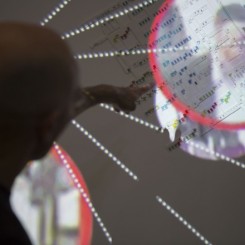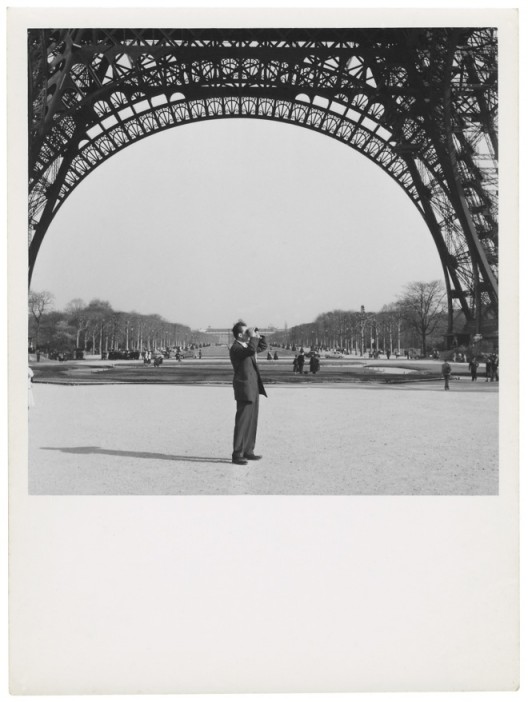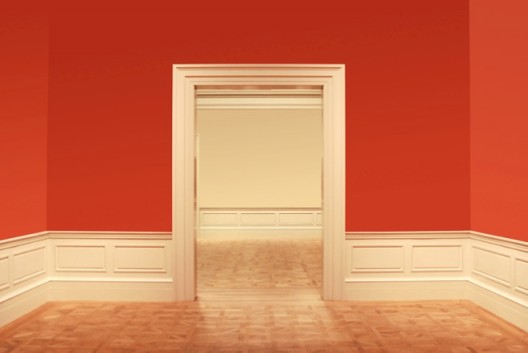Walid Raad at MoMA
Museum of Modern Art (11 West 53 Street, New York), Oct 7, 2015–Jan 31, 2016
Had MoMA been empty, the Walid Raad show would have been amazing to see there.
But MoMA is never empty. Quite the opposite. It is one of the most popular institutions in the world. One part of Walid Raad’s untitled exhibition is shown in the atrium—a large area connecting the entrance stairway to the exhibition halls complete with the sound of thousands of people walking in and out of the museum, its echo traveling to the second-floor space. The atrium is a great location for performance: this is where Marina Abramović sat in front of viewers for the duration of the exhibition’s opening hours in “The Artist is Present” in 2010. And it’s a great place to show work of massive scale, like Monet’s twelve meter long “Water Lilies” from MoMA’s collection. It is unfair to discuss the museum-tourism complex in a review of an artist’s exhibition, suffice to say: the museum’s atrium is not a place to show slow, considered, textual work.
The result thereof is that in the atrium, Raad’s project “Scratching on things I could disavow” (2007-ongoing) reads more like a stage set than a space of contemplation. This is fitting: Raad will be performing “Walkthrough”, an artist-led (and artist-meddled-with) tour of his exhibition, where he tells the backstory of the works and shares his ideas with the audience, about sixty times throughout the show’s run. The rest of the time, however, the experience of Raad’s exhibition is of an attempt not to give in to the scale of the space and the works and really delve into them. There is an audio guide recreating “Walkthrough”, but it is far from being as effective as the artist’s version, especially since it falls into familiar tropes of the audio guide of the ”For more information on this work, press 280” variety, rather than expand its possibilities. In the atrium, “Scratching on things I could disavow” feels grander, more spectacular, than its content would imply. The wall text explains that the “Walkthrough” is one chapter in “Scratching on things…”, a bid to tell a number of stories from the numerous attempts charted around 2007 to define “Arab art” with the rise of art fairs, museums, schools, galleries, and other contemporary-art infrastructure in the Middle East.
Bookmarked by two sizable pieces, “Scratching on things…” does command the space, the progression through different works begins with a huge temporary wall on one end of which is hung “Appendix XVIII: Plates 22–257”, a collection of framed prints that have escaped the wars in Lebanon and which somehow offers remnants of the culture of the country through typefaces, colors, shapes, and forms. On the opposite wall is “Section 88_Act XXXI: views from outer to inner compartments”; lit with massive theater lights, it is a large projection of a traditional museum’s halls fading into one another. The museum on film and the museum hosting the work merge in the viewer’s mind, conveying a uniformity of presentation, from one white cube to another, one tourist attraction museum to the next. Perhaps this is what Raad is afraid of with the rise of new, shiny museums throughout the Middle East.
Both these works are large enough to dominate the space. Each also requires less attention than the other four other pieces, which, even if almost comparable in size, demand more time and focus from the viewer. “Translator’s Introduction: Pension arts in Dubai” displays Raad’s research into the Artist Pension Trust (APT), a private art investment company. Snaking notes drawn and printed on the wall create the image of contemporary capital—omnipresent, impossible to trace. Two other works discuss the status of viewing and perception of art from the Middle East—”Index XXVI: Red” is a portion of a temporary wall brought in from Beirut emblazoned with the names of painters and sculptors who worked in Lebanon in “the past”, while “Preface to the Second Edition” is the result of a visit to the Arab Museum of Modern Art in Qatar, where the artist noticed there were no reflections in the paintings on view (in all probability due to high-quality museum glass). Raad shows photographs that include a reflection of his own image, which in the exhibition text the artist says he “hopes will leave the works and attach themselves to the paintings.”
The literary nature of the titles communicates much of Raad’s methodology. The Lebanese artist, who is currently living and working in New York, hones in on the effect of storytelling in his works, many of which relate to his experiences in Lebanon during the Civil War and to the socioeconomic and political situation in the Middle East. Raad’s works never seem to fully convey information; rather, they are a curious combination of truth and fiction (and it’s never really clear just what is truth and what fiction) presented as taxonomy of events, an archive of remnants, or a collection of objects.
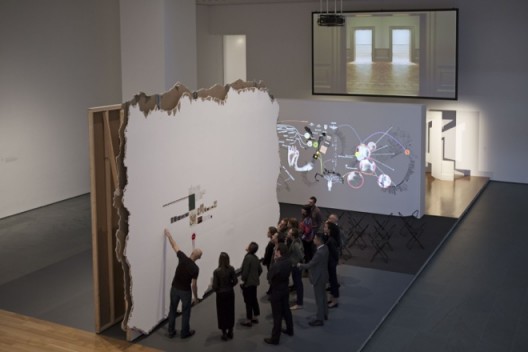
Walid Raad, “Scratching on things I could disavow: Walkthrough”, 2015. Part of “Walid Raad”, The Museum of Modern Art, October 12, 2015-January 31, 2016. © 2015 The Museum of Modern Art, New York. Photo: Julieta Cervantes.
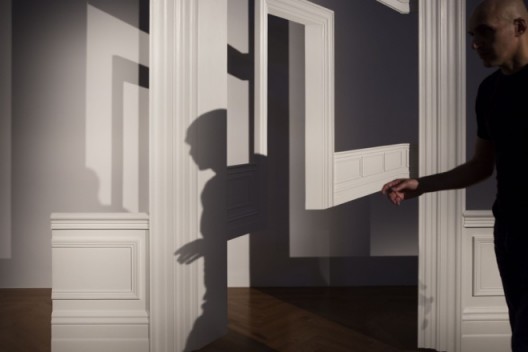
Walid Raad, “Scratching on things I could disavow: Walkthrough”, 2015. Part of “Walid Raad”, The Museum of Modern Art, October 12, 2015-January 31, 2016. © 2015 The Museum of Modern Art, New York. Photo: Julieta Cervantes.
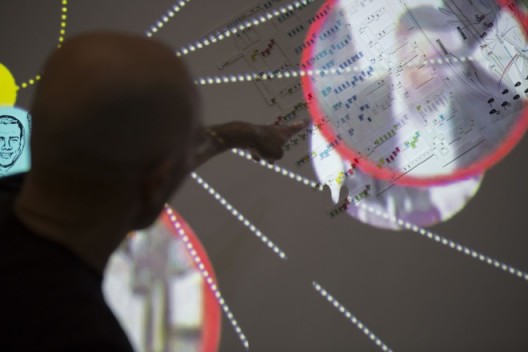
Walid Raad, “Scratching on things I could disavow: Walkthrough”, 2015. Part of “Walid Raad”, The Museum of Modern Art, October 12, 2015-January 31, 2016. © 2015 The Museum of Modern Art, New York. Photo: Julieta Cervantes.
This methodology has driven what is arguably Raad’s most well-known work, “The Atlas Group” (1989–2004). “The Atlas Group” was never a group, though it presents itself as an institutional identity collecting, preserving, and displaying images, stories, and artifacts from the contemporary history of Lebanon. A selection from “The Atlas Group’s” archive is on view on the museum’s third floor. There are photographs and films from the Lebanese historian Dr. Fadl Fakhouri, like “Miraculous beginnings,” a film where the doctor exposed a single frame every time he thought the war in Lebanon had ended). A document titled “Secrets in the open sea” is an anonymous contribution of twenty-nine photographs in different shades of blue monochrome that, when given to “The Atlas Group” in 1994, were then discovered to include black-and-white portraits of people who had drowned in the Mediterranean. There are also images of ammunition taken by a member of the Lebanese Army’s explosives division (“I Might Die Before I Get a Rifle”). There’s a video taken by Officer 17, a Lebanese intelligence officer who was stationed at the boardwalk in Beirut. The seven-minutes and forty-seconds film (“I Only Wish That I Could Weep”) documents the sunset against the sea every day in lieu of the soldier’s target. It’s a slow and beautiful collection that also shows day-to-day life on the city’s seaside.
In reality, there was never a series of prints disguising portraits of the dead. Nor a Dr. Fakhouri or an Officer 17. The contributors who gave materials to “The Atlas Group” never existed. It is all Raad’s orchestration. Raad’s system of merging of truth and fiction, his concern with the way history is made and written, and the construction of an image for all of these unifies both projects: “The Atlas Group” and “Scratching On Things I Could Disavow”. Separating them doesn’t make either one weak in any way, but it does leave the viewer wondering about this curatorial decision. In its interest in the organization of images and the construction of an archive, however, the work creates its own institutional nature. Much attention has been given to the tension between truth and fiction in “The Atlas Group” when, in fact, fiction is a method. The result is a selection of documents narrating a history so painful and bloody it is almost impossible to grasp. They rely on the documentary tradition in order to recount what is essentially the experience of the place; that this is presented as the personal experiences of nonexistent people only makes it seem more universal because nothing about these stories reads as untrue—except the fact that they are.
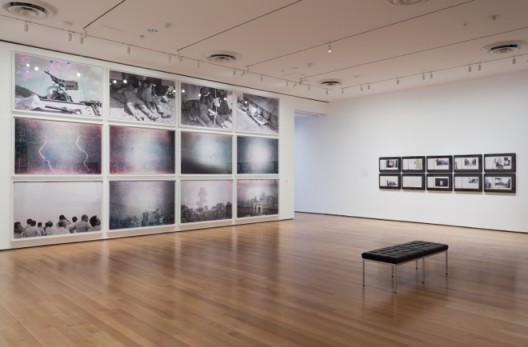
Installation view of “Walid Raad”, The Museum of Modern Art, October 12, 2015-January 31, 2016. © 2015 The Museum of Modern Art, New York. Photo: Thomas Griesel.
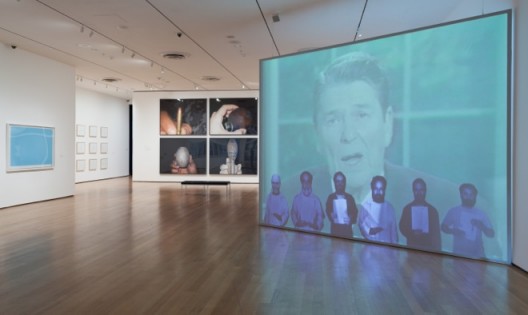
Installation view of “Walid Raad”, The Museum of Modern Art, October 12, 2015-January 31, 2016. © 2015 The Museum of Modern Art, New York. Photo: Thomas Griesel

